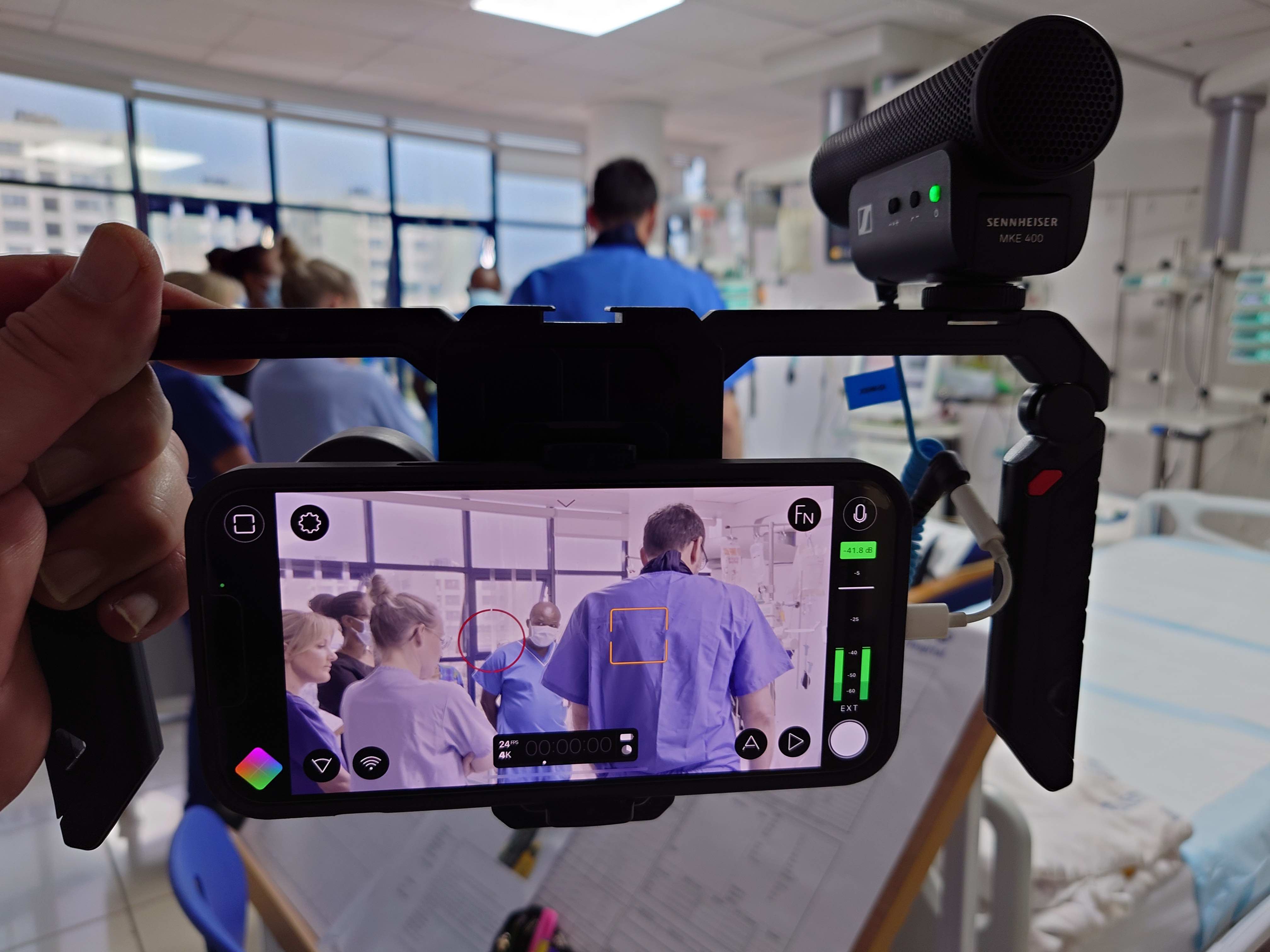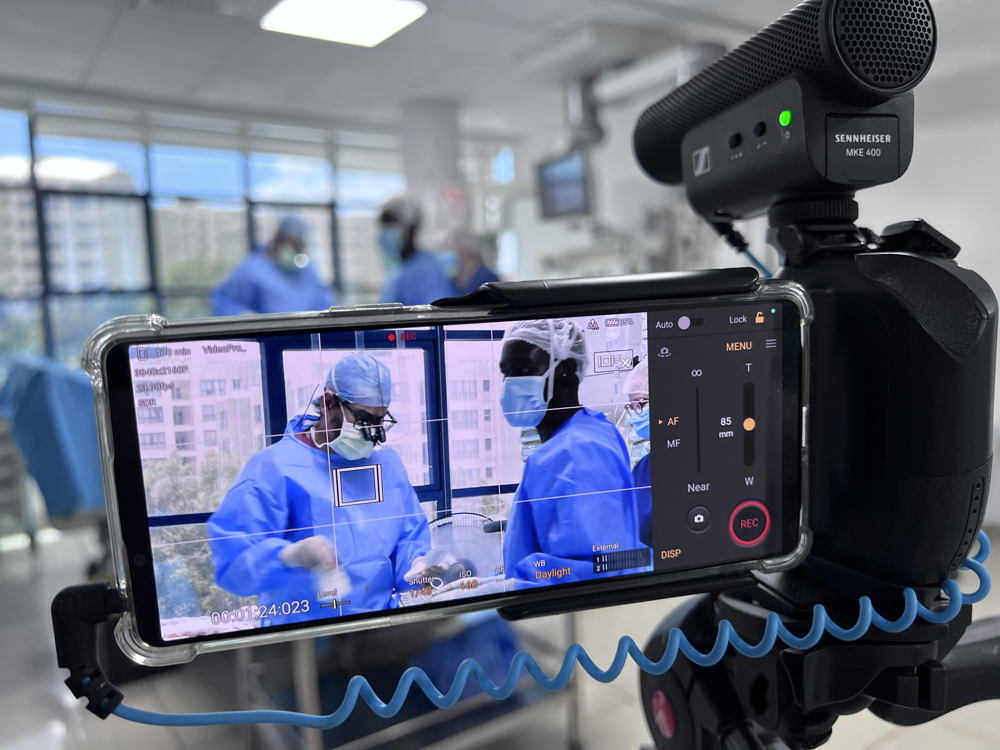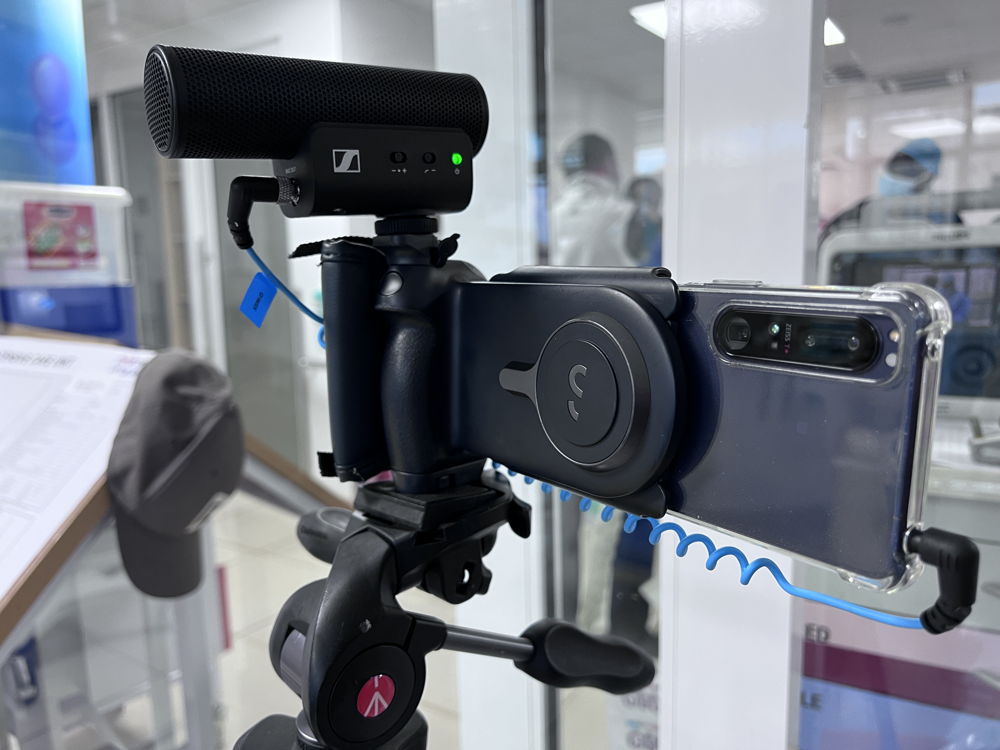Sennheiser microphones capture the heartbeat of humanitarian work in award-winning documentary

Cassius Rayner’s ‘My Little Heart’ documents the work of UK medical volunteers performing life-saving surgeries in Kenya
Wedemark, 29 May 2025 – When mobile cinematographer and filmmaker Cassius Rayner set out to document the extraordinary work of UK-based charity Healing Little Hearts, he knew that capturing pristine audio in busy hospital environments - without cluttering the space with gear - would be as crucial as the visual storytelling. Sennheiser’s compact MKE 400 shotgun microphone proved essential to the success of this award-winning documentary, which shines a light on NHS medical professionals volunteering their time to provide free heart surgeries for children in Kenya and other regions.
“I’d already shot a documentary about a professor who does these missions overseas, so I was already familiar with that world,” Rayner explains. “But I still felt that the general public weren’t aware that many people in the NHS were volunteering in their holiday time. For me as a filmmaker, it’s a story that is fascinating.”
The documentary, titled ‘My Little Heart’, won in the ‘Best Smartphone Documentary’ category at the Budapest Smart Film Festival in March, showcasing the power of modern mobile filmmaking equipment paired with professional audio solutions.

“With these documentaries, usually you have to enter them into lots of film festivals and keep your fingers crossed,” shares Rayner, “so I was very happy and surprised to get notice via email that it had won an award.”
Rayner had reached out to the charity that was doing all the missions, which are run by very senior doctors in the UK, and they were very excited by the idea of him coming with them. “I managed to get some sponsorship from Sony and Filmic Pro in the US, so that financed me to be able to go out and follow them,” he continues. “I spent ten days with them in Nairobi, filming at the main hospital, and what came out of it was a 30-minute documentary.
“I didn’t want a corporate video or typical charity promo video. I wanted a true documentary fly-on-the-wall story. I wanted to follow the story of the surgeons, doctors and nurses, and why they do what they do — work 24-hour shifts in these hospitals in the middle of nowhere. I felt like their stories and their process needed to be conveyed more. Charities need content, but they usually haven’t got any money to hire filmmakers to do that. I feel they’re really important stories that should be observed.”
The Sennheiser MKE 400 shotgun microphone was instrumental in capturing the intimate moments and critical communications in the bustling hospital environment. The directional microphone features a super-cardioid pickup pattern that focuses on subjects directly in front of the camera while minimising ambient noise — critical for maintaining dialogue clarity in busy medical settings.
“The MKE 400 was fantastic for quick sound bites, but also general atmosphere,” explains Rayner. “I always had that recording to pick up all the sounds that were happening in the hospital. There were instances when it was so noisy and so chaotic, and I needed a cleaner sound. It’s incredibly distracting for the doctors if I’m getting in their way, so I was very reliant on the MKE 400 in many situations.”

The compact form factor of the MKE 400 allowed Rayner to maintain a low-profile presence, which was critical when documenting sensitive medical procedures. Its integrated shock mount minimised handling noise during mobile filming, while the built-in windscreen ensured clean audio even in ventilated hospital environments. Combining a clothing-clipped transmitter for dialogue with the directional MKE 400 shotgun mic enabled unobtrusive recording while capturing all necessary audio.
Rayner's minimalist yet professional setup demonstrates how modern creators are achieving broadcast-quality results with compact equipment. “Ninety per cent of it was shot using a Sony Xperia. Ten per cent was shot using an iPhone,” he notes. "The iPhone was used more as a backup, because if the Sony Xperia overheated or crashed after many hours of filming, I could step in with the iPhone to film the content.
“For me, the Sony Xperia creates a much more visually cinematic result, with footage that feels softer. I felt I did a lot less in post-production to correct colour or white balance. It’s more natural in its results, and it’s the closest I’ve ever felt connected to film in recording on a mobile phone.”
Paired with the Filmic Pro app for professional video controls, the Sennheiser MKE 400 connected directly to the smartphones, enabling Rayner to capture professional-grade audio without complex setups or additional recording equipment.
The documentary benefitted significantly from the support of Neill Barham, former CEO of Filmic Pro, who served as executive producer on ‘My Little Heart’. Barham has been instrumental in championing humanitarian documentary projects around the world.
“A lot of these films wouldn’t have been made without Neill,” says Rayner. “He supported a huge elephant rescue film in South America that I shot a few years ago, and he’s now involved in another feature that’s being made there.”

Rayner highlights Barham’s commitment to democratising filmmaking: “He helped me when I did the mobile training camp in Congo, which Sennheiser and Sony were a part of. That was the very first official mobile training camp in Africa. He believes in mobile filmmaking and believes it’s for everyone.”
The collaboration between Rayner, Barham, and technology partners like Sennheiser, Sony, and Filmic Pro represents a new model for producing humanitarian content that might otherwise go undocumented due to budget constraints, and the documentary’s success demonstrates how professional audio tools like Sennheiser's MKE 400 are enabling independent creators to produce such impactful content.
(Ends)






